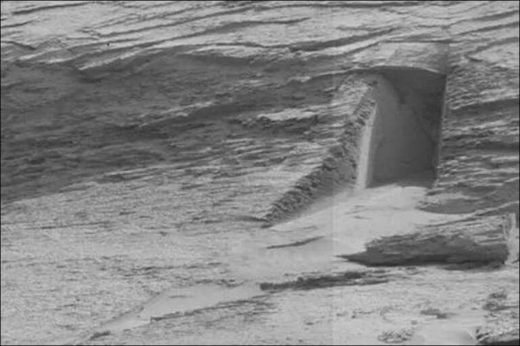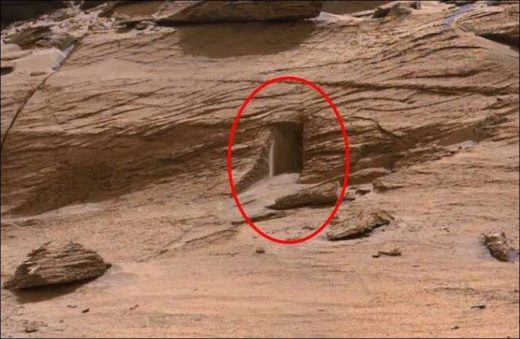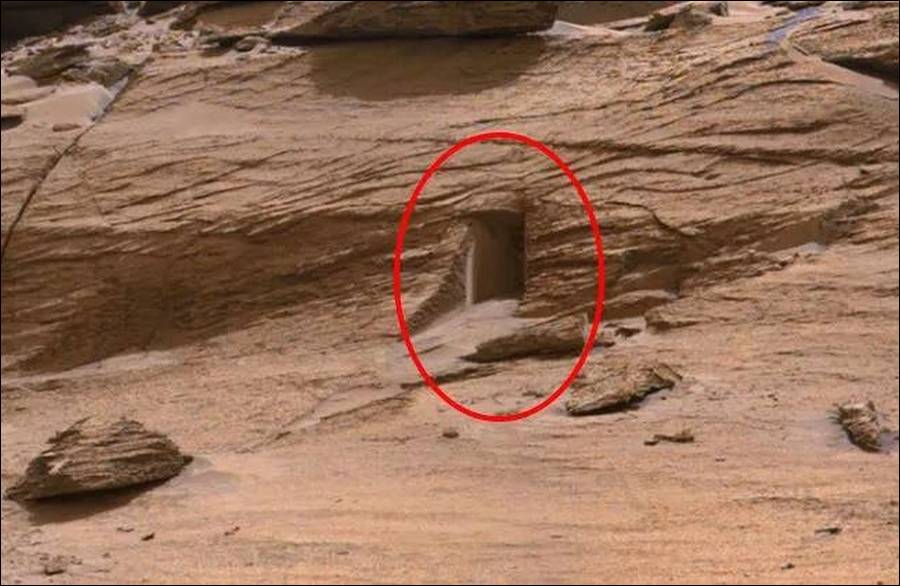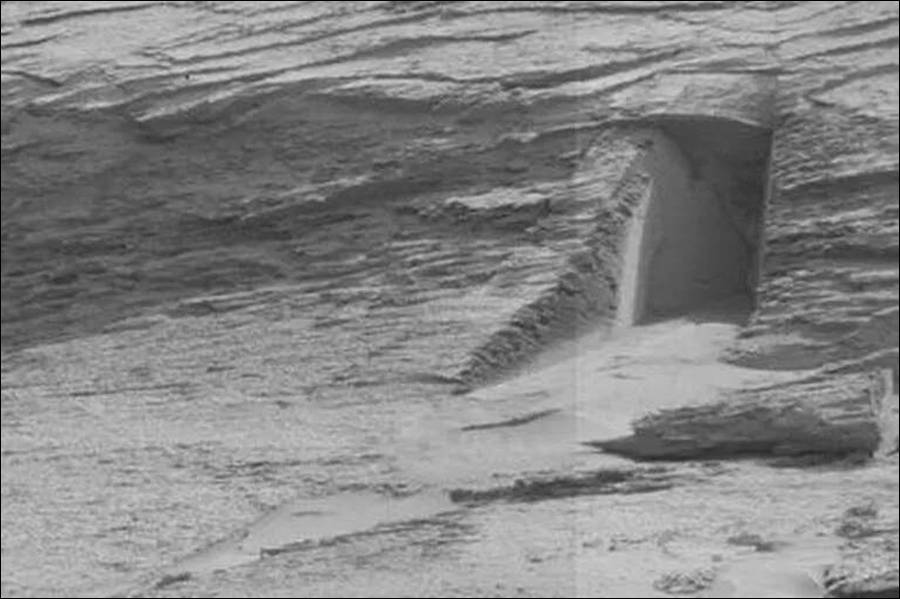NASA shared, the ground moved! The truth behind the ‘door’ image on Mars.
Humanity’s exploration of space, and even in the center of a human colony that may be established in space in the future, has always been the same planet for years: Mars. A photo that NASA sent via Curiosity, the vehicle on this planet recently, caused a stir and instantly became an internet phenomenon. Is the photo on Mars that points to a door-like formation real? But if it’s real, is this really a door made by aliens? Here is the answer!
Curiosity took a photo with its Mast camera (Mastcam) on May 7, and this photo was released by NASA on Thursday. Since then, all social media platforms have been ‘agitated’ with this photo. Countless people commented on this image, which went viral and called the ‘Alien Gate’. Experts have been trying to explain the truth behind the situation for two days.
First off, the ‘Gateway’ seen on Mars isn’t built for aliens. So what’s actually going on? Experts are pretty sure this image is a natural feature of the Martian landscape.
“It’s a very interesting sight,” Neil Hodgkins, a British geologist who studies the geology of Mars, told Live Science. But the expert remarks, “But frankly, it looks like natural erosion to me.” he finished.

The image is real, but…
Many colorized photos have been created from the original black and white photograph, including a panorama made by combining several photos of Curiosity, as seen on Gigapan.com, the website of a panoramic photography company.
A few clues make it clear that the image isn’t a real door:
To begin with, the door is less than 1 meter high. “This might indicate that the Martians are small,” joked planetary geologist Nicholas Mangold of the University of Nantes in France.
One of the crazy comments on the internet said that this door was the tomb of Jesus in space. In some of the other comments, E.T. It was said to be a cradle for (a famous 1982 sci-fi movie and an abbreviation for the eponymous alien character).
But the real answer is, of course, none of these. According to experts, what looks like a door is a shallow opening in a rock. And all scientists agree that this is something caused by natural forces.
Mars is eroded
Hodgkins, vice president of British geoscience company Searcher, thinks the “door” is due to erosion. On the rock, rocky layers called strata can be seen, sloping on the left and higher on the right. “These are silt beds with prominent harder sandy beds,” says Hodgkins. he puts an end to the discussion.
Martian winds have eroded the layers of rock and soil there since they were exposed on the surface, and the images reveal traces of it even inside the “door.”
A few natural vertical fractures are also visible in the image; Among them, the fractures and vertical cracks from the way rocks levitated on Mars seem to have formed a small cave or “gate” where vertical fissures intersect with the layers.
Everyone is asking the same question: Did aliens build this gate on Mars? There may also be a large rockfall forming the gate-shaped cavern. Although gravity is not that strong on Mars, it is strong enough to cause this formation.
What arouses suspicion of the door is a rock on the surface, just to the right of the “door,” which appears to have a smooth vertical edge. Because this rock probably fell relatively recently and hasn’t been exposed to Martian winds for a long time, it looks like ‘all very natural and ridges you can see in many arid places around the world’.
No Mars earthquake
Internet speculation has suggested the possibility that the small door-shaped cavern may have originated from a seismic “Marsquake.” For example, two of the largest Mars earthquakes ever recorded occurred in late 2021.
But Mangold insists that: “The whole mountain has been severely fragmented, it doesn’t need major Martian earthquakes. Instead, the cracks may have formed before the rock was exposed by the hydraulic pressure of water in the cracks, or they could be the result of thermal stress caused by seasonal temperature changes on the planet’s surface.”
“It’s a beautiful cracked surface indeed,” said geologist Angelo Pio Rossi of Jacobs University in Bremen, Germany, who created panoramas of the ledge from successive photos of the Curiosity rover, explaining that the gate-shaped cavern was produced by visible cracks in the rock.
“Any block isolated by fractures can eventually fall downhill, even if the slope is gentle. The fractures themselves are not created directly by Marsquakes, but simply by deformation over geological time,” Rossi said.
Views: 527







